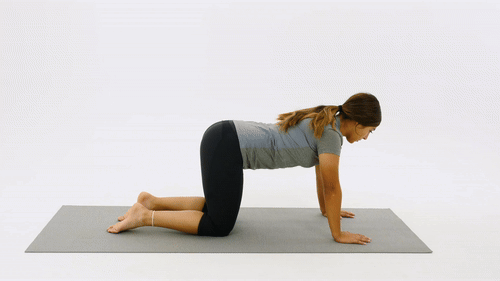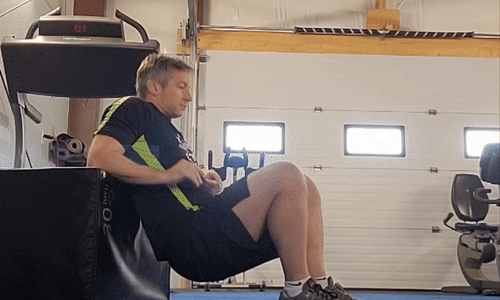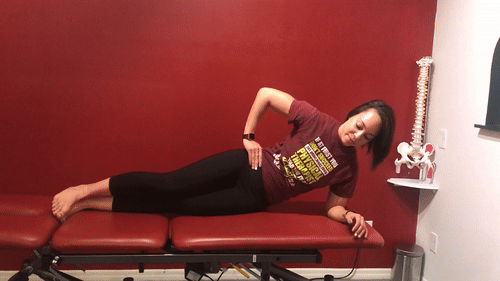5 Best Exercises for Sacroiliac Joint Pain
About 85% of us suffer from low back pain at some point in our lives. But did you know that the main source of pain in up to 20% of low back pain cases is Sacroiliac Joint Dysfunction? Unfortunately, it's one of the most misdiagnosed or overlooked problems in patients with low back pain. If you've been diagnosed or at least suspect it as a likely culprit, it helps to know what the condition is about, along with key exercises you can use at home for optimal recovery.
What Exactly is Sacroiliac Joint Dysfunction?
The term generally refers to structural or functional problems within one or two Sacroiliac Joints(SI Joints). If you’re unaware, SI joints connect the two Pelvic bones to the spine through a triangular-shaped bone known as the Sacrum. The back portion of each pelvic bone has a part known as the Ilium, which articulates with the Sacrum through the SI joint, hence the name “Sacroiliac Joint”.
SI joints are primarily designed for strength and stability. They are mainly supported by an extensive group of tough ligaments. Muscles around the SI joint also play a crucial role in its stability. In basic terms, muscles provide dynamic stabilization to complement passive stability offered by the ligaments and bony set up around the joint.
In simple terms, whenever you’re sitting, standing, or moving, these muscles contract to keep the joint together and properly aligned. This helps with avoiding excessive movement and faulty loading, which may cause dysfunction and pain. This is why exercise programs aimed at strengthening key muscle groups in and around the pelvis, low back area, and the core are a key part of SI joint Dysfunction management.
So, What Causes SI joint Pain/Dysfunction
Trauma
88% of SI Joint Dysfunction is due to repetitive microtrauma. This includes repetitive lower body movements with significant vertical and rotational forces against the SI joint. Acute, high-impact trauma on the pelvis and lower back areas may cause direct injuries to structures within and around the joint, i.e, road accidents, sports injuries.
Arthritis
This is a broad term for a range of diseases marked by inflammation(pain, swelling, tenderness, etc) and loss of function in joints. Like most weight-bearing joints, the SI joint is naturally at risk of developing Arthritis, which also increases with aging. There are two main forms of Arthritis:
Osteoarthritis: The most common form of Arthritis. It involves degeneration of the lining of joints called cartilage, often linked to wear and tear processes. Its risk and incidence increase with age.
Rheumatoid Arthritis: An autoimmune disease where the body’s immune system starts attacking structures in and around the joint, causing damage and inflammation.
Pregnancy
Hormonal and structural changes during pregnancy can cause SI joint pain even after delivery. 20% of SI joint pain cases can be linked to pregnancy. Ligaments around the SI joint become “softer," allowing the Sacroiliac joint to be more flexible. This can cause stability issues and faulty loading within the joint, which comes with the risk of SI joint dysfunction and pain.
Structural and Postural Abnormalities
Structural issues such as abnormal bony structure of the Sacrum or Ilium can alter joint mechanics. This increases the risk of dysfunction and pain. Misalignment of the Sacrum and other postural issues like Scoliosis, pelvic tilt, muscle imbalances, and leg length discrepancies may be the primary culprits behind SI Joint pain.
Treatment
Avoid guesswork. Proper diagnosis and treatment require you to work with your Doctor, Physiotherapist, or Chiropractor. As we mentioned earlier, SI joint Dysfunction can be tricky to diagnose. You’ll need physical clinical tests and imaging carried out by a professional.
Reach out to our physiotherapists here if this sounds familiar.
Effective treatment of SI joint Dysfunction typically combines manual therapy, exercise therapy, and medication, if needed. Surgery or more powerful Opioids may be considered in severe cases that have failed to respond to conservative treatments.
Best Exercises for Sacroiliac Joint Pain
As already pointed out, exercises are a key part of SI Joint treatment. Therefore, we’ll look at some of the most effective moves for Sacroiliac Joint Pain. However;
A Quick Word of Caution
These exercises are not meant to replace professional advice. It’s best to consult a registered physiotherapist before committing to any moves discussed below.
Glute Bridge
The Glute Bridge is one of the most effective exercises for working multiple muscle groups involved in the stabilization of the SI joint. It primarily works on the Gluteus Maximus, a powerful muscle that helps stabilize the SI joint. Other muscles include your Hamstrings, deep stabilizers of the spine and pelvis, and the pelvic floor muscles.
How to Do it:
Lie down on an exercise mat with both feet resting on a medium-sized exercise ball. You can use another stable platform raised at a similar height(a bench).
Arms should be stretched to the side to provide extra support.
Raise your waist upwards and hold the top position for up to 10 seconds.
Reverse to the starting position, repeat for another rep.
If you don't have access to a raised platform or the exercise proves too difficult to execute, start with the simplest version.
Lie down on an exercise mat.
Bend both legs, with feet firmly planted on the floor.
Extend your hip, driving the waist and pelvis upwards to the top position.
Hold for 10 seconds, reverse to the starting position.
The load can be upgraded by simply changing the stance in such a way that reduces overall support. For instance, folding your arms across your chest or lifting one of your legs requires more input from the involved muscle groups.
Bird Dog
This is another classic move to challenge the core without any exercise equipment. All you need is an exercise mat or anything that helps with cushioning on the floor.
How to Do it
Get down on all fours/quadruped positions.
Wrists should be directly below your shoulders, and Knees below your hip joints. This ensures balance and proper exercise form.
Raise your left arm while stretching it out in front to shoulder level. At the same time, raise and stretch your right leg to hip level.
Reverse the movement to get back to the starting position.
Repeat the sequence on the other side.
Hip Thrust
This exercise is a powerhouse for Glute muscle development. Comparative research studies continue to prove it one of the most effective ways of zoning in on your Glute muscles, especially the Gluteus Maximus.
How to Do it
Sit down beside a bench. Your upper back should be resting on the bench's platform with your feet resting firmly on the floor.
Just like the Glute Bridge, drive your hip and pelvis upwards to the point where your Pelvis or waist is level with the upper body.
Hold for 2 seconds and reverse to the starting position with control.
Repeat the movement for another rep. Aim for 3-4 sets of 10 repetitions.
Side Plank
This is another highly effective exercise for your core and Glutes, especially the side Glutes known as Gluteus Medius and Minimus.
How to Do it
Lie down on your left side.
Prop up on your left elbow. The elbow should be bent (90 degrees), with the forearm resting on the floor.
Lift your Pelvis off the floor until it's level and aligned with your body.
Hold the position for 10 seconds.
Return to the starting position.
If this proves too heavy or difficult, complete the sequence with both knees bent at 90 degrees. This eliminates some of the load, making the movement easier.
Plank
This is a classic exercise for building core strength. Its effectiveness lies in its ability to recruit global and deep stabilizers of the Spine and Pelvic muscles at significant levels.
How to Do it
Lie down on your tummy on a mat.
Prop up on both elbows and feet, lifting the whole body.
Make sure you're well aligned; that is, your Pelvis should be level with the rest of the body to get the most out of the targeted muscle groups.
Hold for 10 seconds.
Return to the starting position.
Repeat 3-4 times
Book Now
Conclusion
Looking to get more guidance on how you can use these exercises for better outcomes? Reach out to us through the booking form below or give us a call through the number on the top right corner. We’re here to make sure you get the help you deserve.














